AR, VR and Art : an historical perspective
Towards new creation processes.
Keynote presented at Laval Virtual VRIC 2015. See the main text.
(Due to lack of time, this part was not presented in Laval)

The typical archetype of an artist: Van Gogh, solitary, and a non standard mind.
 Until
recently, an architect like Frank Gehry could keep on old design methods, using
clay, wood or cardboard to give form to their ideas, and then proceed further
with digital tools. The virtual mode is only an ancillary step in the creation.
Until
recently, an architect like Frank Gehry could keep on old design methods, using
clay, wood or cardboard to give form to their ideas, and then proceed further
with digital tools. The virtual mode is only an ancillary step in the creation.

then this is digitized. A first form of augmentation.
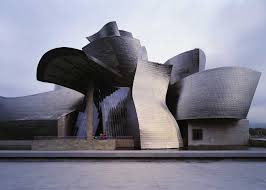
With results in proportion to the process (Guggenheim museum in Bilbao, 1997).
 The new tools can answer to two opposite demands. For some artists, the computer is nothing more than a tool, and the best is to “Make tools as transparent to the artist as special effects were made transparent to the public”. (Robert Cook at Siggraph Asia 2008, see our interview with Marie-Paule Cani (in French). At present, it does not require long years of learning to use some powerful tools as Photoshop or Sketchpad.
The new tools can answer to two opposite demands. For some artists, the computer is nothing more than a tool, and the best is to “Make tools as transparent to the artist as special effects were made transparent to the public”. (Robert Cook at Siggraph Asia 2008, see our interview with Marie-Paule Cani (in French). At present, it does not require long years of learning to use some powerful tools as Photoshop or Sketchpad.
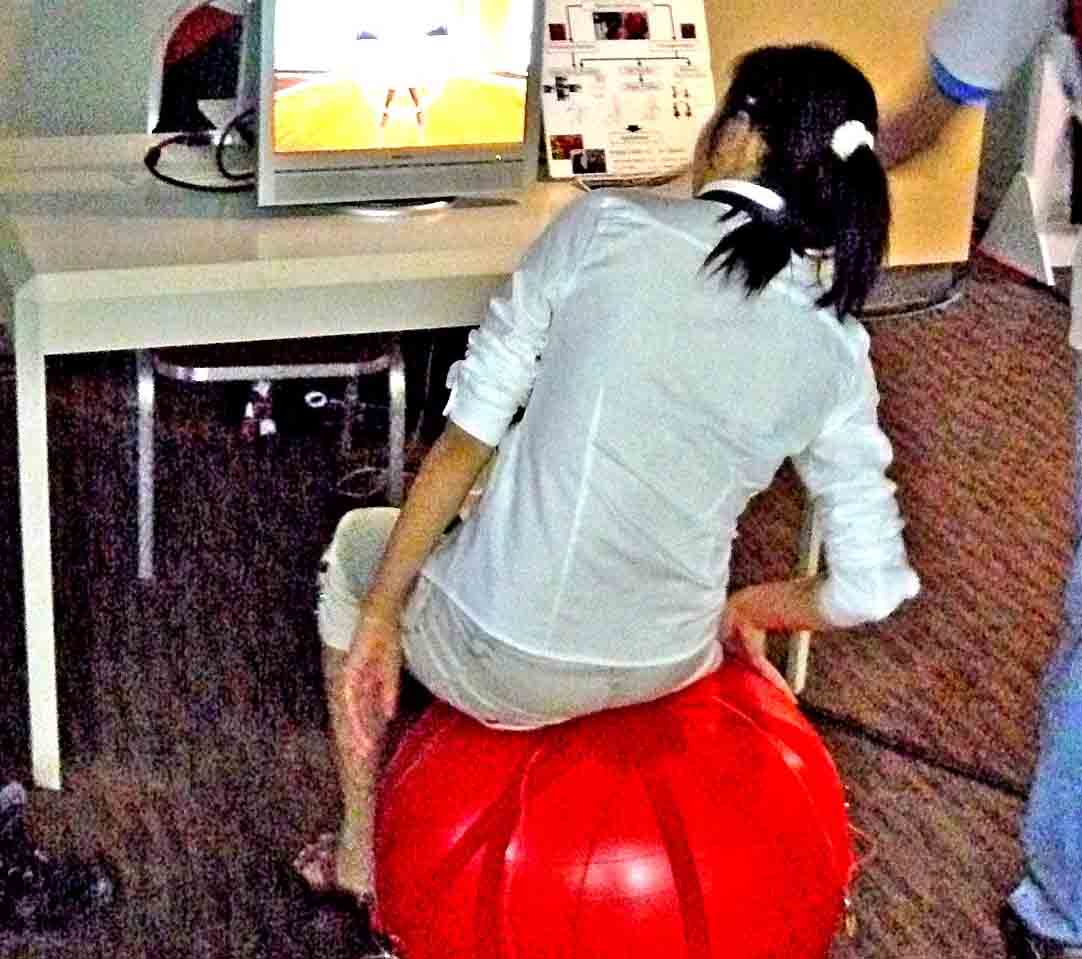 And if you don't mid to use your hands, other parts of your body can do it (Ass-ball., demonstrated at Siggraph Asia Singapore 2009c).
And if you don't mid to use your hands, other parts of your body can do it (Ass-ball., demonstrated at Siggraph Asia Singapore 2009c).
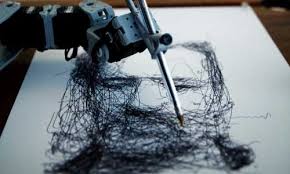
Let's push a little farther and you don't need a human artist. A robot will do the job for you (here, robot portrait making by Patrick Tresset).
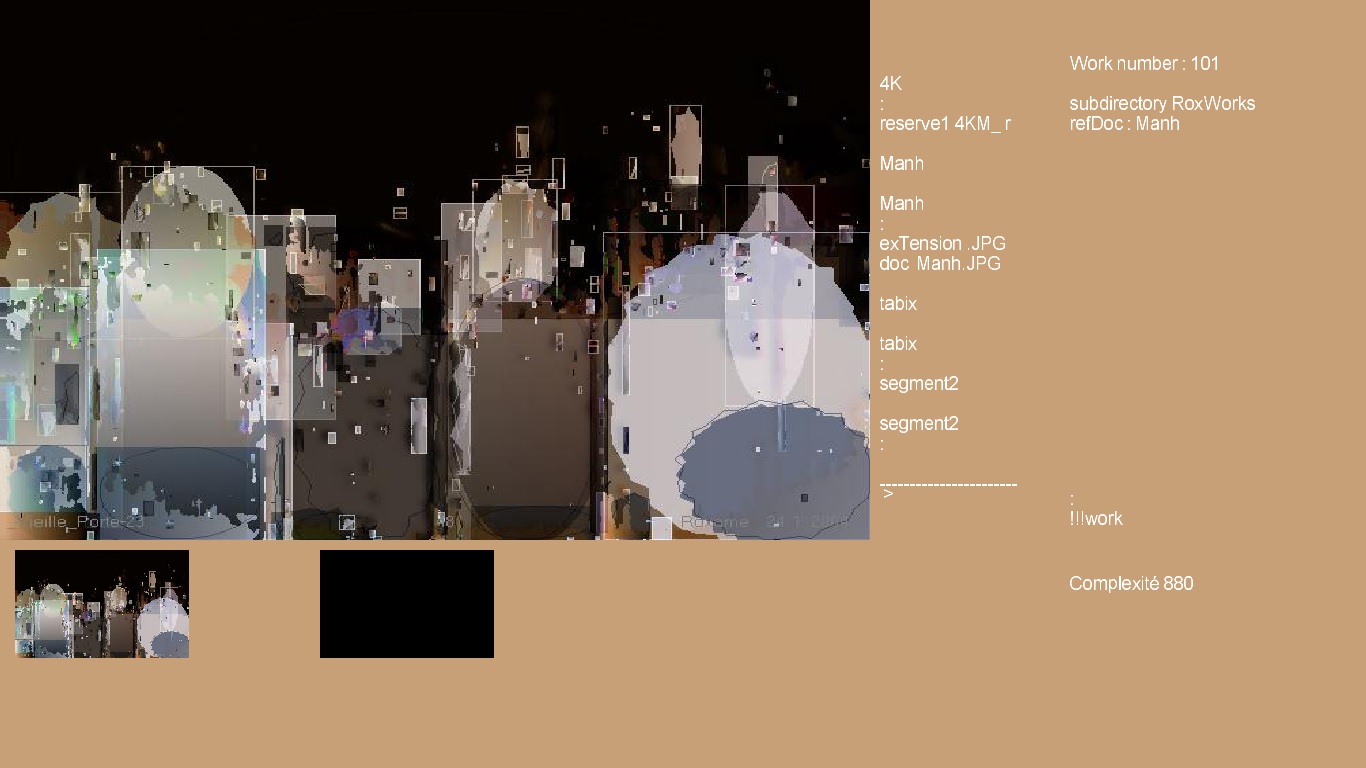 Generative tools like my Roxame can operate alone, from picture as well from abstract concepts. In these approaches, one can say that the real artist is the tool maker. A meta-artist, somehow.
Generative tools like my Roxame can operate alone, from picture as well from abstract concepts. In these approaches, one can say that the real artist is the tool maker. A meta-artist, somehow.
 But other artists take coding as a part of their creativity, and not the less fascinaging one. They use a large variety of tools, one one on the most "beautiful" being Pure Data. Not or amateurs as soo as the program reaches some complexity.
But other artists take coding as a part of their creativity, and not the less fascinaging one. They use a large variety of tools, one one on the most "beautiful" being Pure Data. Not or amateurs as soo as the program reaches some complexity.
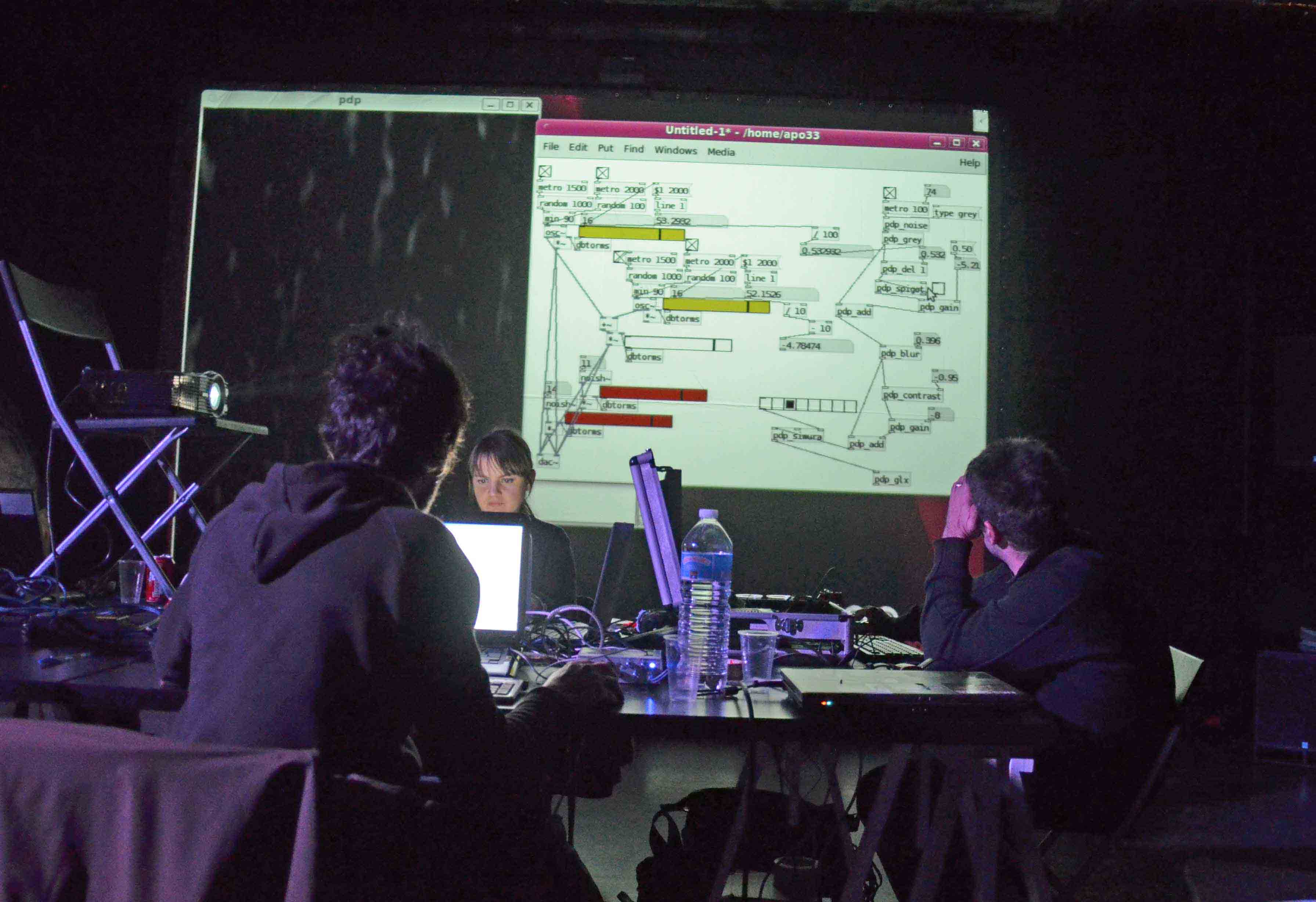 It takes to quite selective but generally cooperative creation process (here a team engaged in live coding, in Nantes). On
the other hand, generally, that will no be enough, and augmented art calls for
the cooperation of multiple kinds of crafts, talents and resources (funding, to
begin with).
It takes to quite selective but generally cooperative creation process (here a team engaged in live coding, in Nantes). On
the other hand, generally, that will no be enough, and augmented art calls for
the cooperation of multiple kinds of crafts, talents and resources (funding, to
begin with).

On a smaller scale, a project like Avatar, in Centre Pompidou (2014) , by Pia Myrvold, intending to create a continuous space incuding several works, involved in depth the show’s curator, Boris Tissot, a seasoned artist and curator, as well as other artists and programmers and the contribution of partners firms. About museums and scenography, see a recent survey and a more ancient synthesis. The idea was to engage the public (in particular the teenagers) in a fully coordinated augmented world, where they could create their own avatar and interact with it in several different works.

The filming process itself takes place in more and more augmented environments, such as Outilnum virtual studio, presented in Laval by Cedric Plessiet, "autonomous and interacdtive virtual actor, cooperative virtual environment for immersive previzualisation tool oriented to movies.

Sport shows are prepared (designed ?) using AR tools like Sideqiq (2015), a "virtual reality American football training" (Sébastien Erckelbout)

Cooperative team is necessary in large projects, such as large spaces artistic augmentatin. Here, team wok led by Riemenschenider (for RATP, the Parisian public transport organization. Then the computer taken as "groupware" takes its part in the enhancement of human cooperation.
Nowadays, teams like OTA+. do their teamwork directly on a net of workstations, and the design goes on through multiple interactions within the team and its partners [18]. Here, virtuality brings continuity and collective thinking all the way long, incuding 3D large scale printing for the “concrete” implementation.

With much more "bio-inspired" projects.
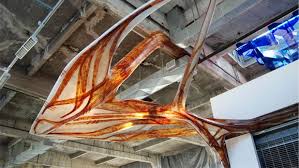

Cinema creation processes (production, post-production, distribution) are also augmented through dematerialization and sophisticated workflow management tools (here, a scheme by David Reisner)

But digital art lets emerge actors of a specific kind. Qwartz mall design, for instance, has been subcontracted to Raymond Interactive, a firm dedicated to point-of-sale ditgization and digital commerce. It is a subsidiary of Saguez and Partners , a sort of new urban planners. Their works are visible also at La Défense espalanade and at the SO Ouest mall in Levallois. Digital Slaves Cy. offers “digital solutions for your creative work/event/show/brand”. Note the term “brand”, which is central in the new augmented continuum, from cinema to transmedia if not tourism.

But this entrepreneurial (or even capitalistic) view may be challenged... or extended by user cooperation, with "UGC" (user generated contents), as calls us to do it a smartphone provider like Samsung.